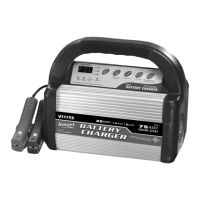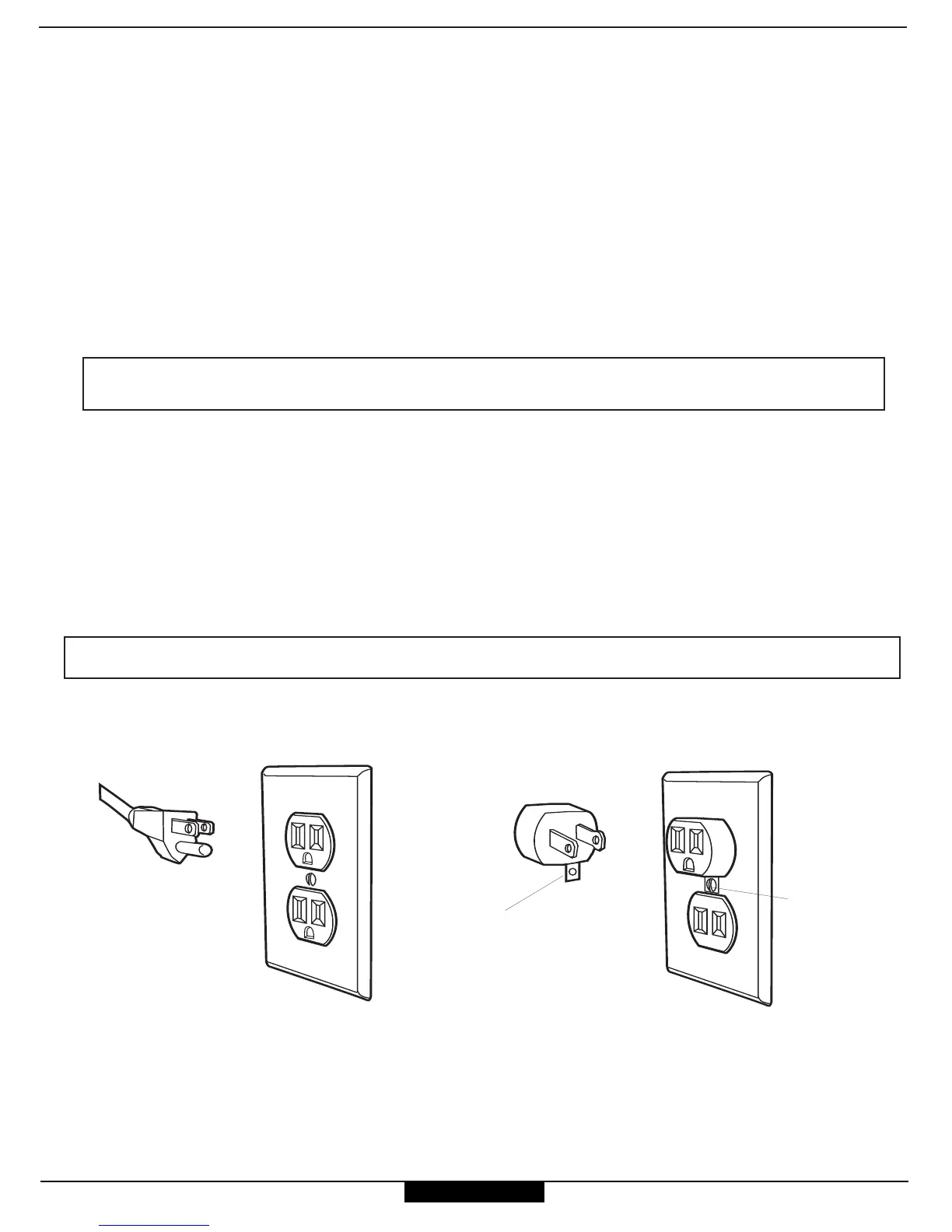

Do you have a question about the Vector VEC1095A and is the answer not in the manual?
| Brand | Vector |
|---|---|
| Model | VEC1095A |
| Category | Battery Charger |
| Language | English |
Details the dangers of explosive gases generated by lead-acid batteries during normal operation.
Covers safe usage, handling of cords, extension cords, and avoiding damage or shock.
Essential precautions for working near batteries, including protective gear and acid contact response.
Ensures proper grounding and connection to a 110/120VAC outlet for safe operation.
Steps before charging, including cleaning terminals, adding water, and ensuring ventilation.
Guidance on where to position the charger for safe and effective operation.
Precautions for connecting and disconnecting DC output clamps to battery terminals.
Detailed steps for safely connecting the charger to a battery installed in a vehicle.
Instructions for safely connecting the charger to a battery removed from a vehicle.
Introduction to the Vector VEC1095A charger and its key features and capabilities.
Explanation of buttons and selectors like Battery Type, Charge Rate, and Engine Start.
Details on indicators such as LEDs for battery type, float charge, and battery voltage status.
Description of the digital display, status LEDs, and their meanings during operation.
Explanation of fault codes (F01-F07) and their corresponding troubleshooting steps.
How to select and adjust charging rates (2A, 10A, 25A) for different battery sizes.
Process for keeping a battery fully charged using the float charge feature.
Steps for equalizing wet batteries to restore cell balance, with critical warnings.
How to test the vehicle's alternator for proper function under no-load and load conditions.
Steps to use the 75 Amp engine start function for quick engine starting.
Guidelines for cleaning, maintaining, and storing the battery charger to ensure longevity.
Addresses common fault codes like F01, F03, F05, F06 and general battery charging issues.
Steps to diagnose and resolve issues when a battery is not accepting a charge.
Advice on charging batteries in extremely cold temperatures and warnings against charging frozen batteries.
Table and formula for estimating charging times based on battery size and charge rate.
Explains the terms, limitations, and coverage of the product warranty.
Instructions for activating the warranty and requesting service or repairs.